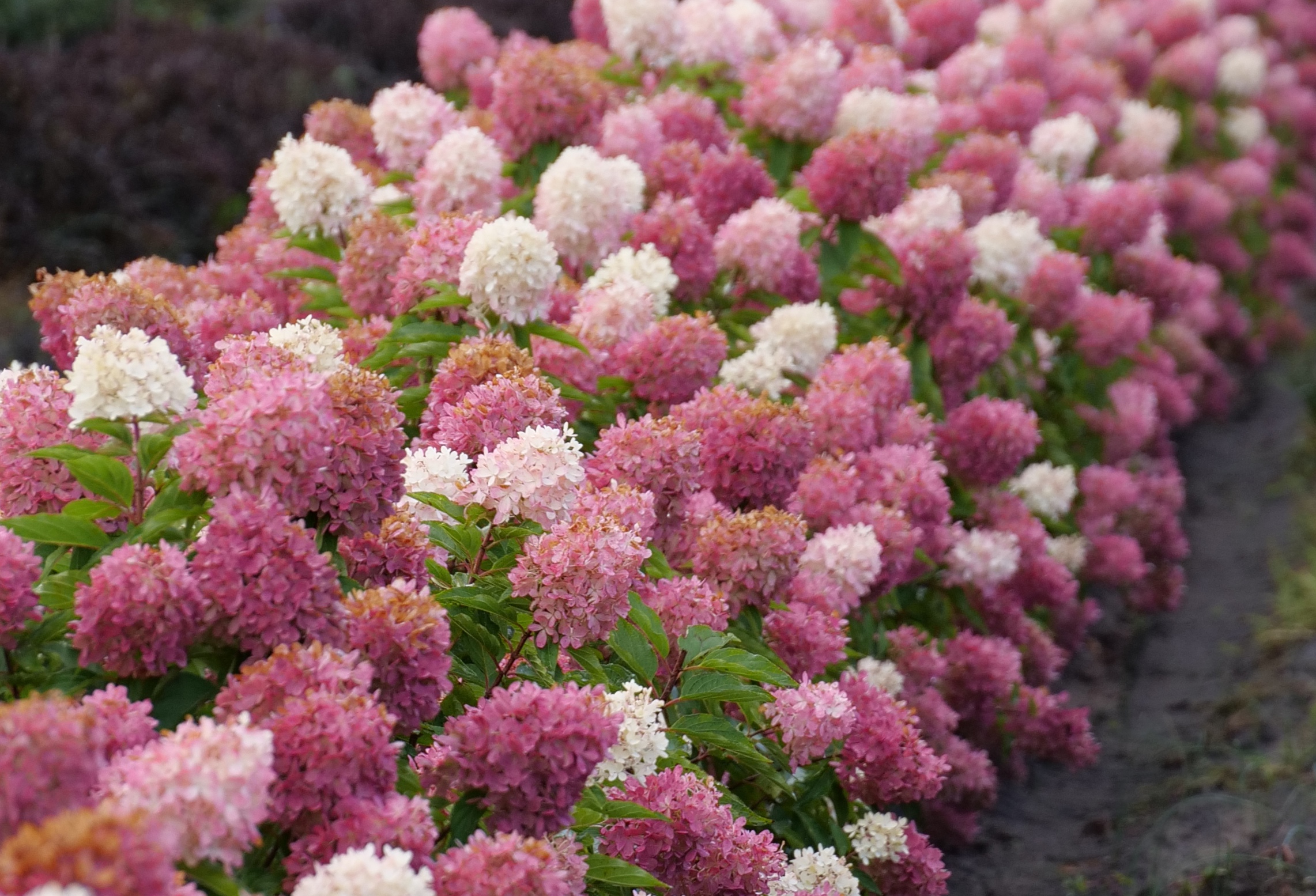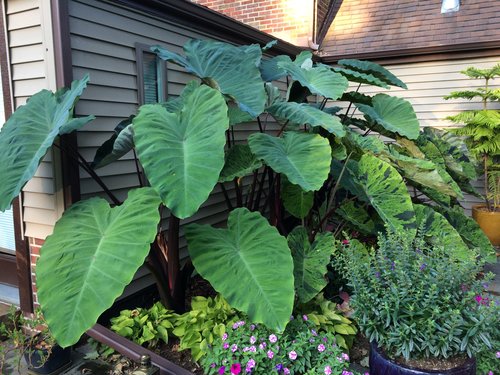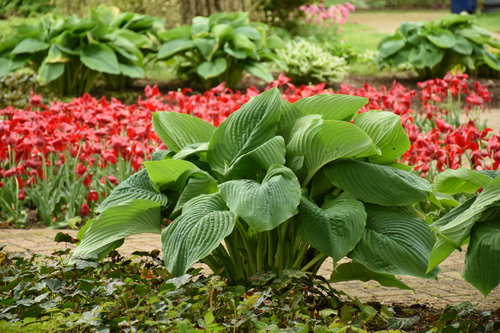How To See If You Have Sand,gravel,or Clay In Your Garden
Basics of soil explained and definitions of common terms.



We get a lot of questions about soil and how a gardener can make it better or deal with problems that we all face when we get out and into the dirt. Soil scientists will tell you there is no such thing as 'dirt' there is only soil, and in pots it is called media. So just keep that in mind since you won't be hearing a lot more about 'dirt' in this article…
Soil science 101: What do all these terms mean?
One of the first things that throws most of us off of learning more about how to manage garden soil or container media is the list of terms. It makes the whole thing seem SO complicated when in fact it is really fairly simple. The easiest way for me to picture it is that good soil has a recipe, just like a good soup has a recipe. So when you are trying to figure your soil questions out think of it as ingredients for a good soup, since plant roots live in the soil and are surrounded by a mixture of air and water, soup is actually a good analogy for what is happening underground.
Rock, Gravel, Sand and Clay
OK, as far as ingredients go: rock, gravel, sand and clay are the ingredients that are essentially, well… rock. They are different kinds of rock but rock nonetheless. They don't provide nutrients, they just provide structure. You can think of it as mostly a difference in the size of the particles. Rocks are big (sometimes VERY big), gravel is smaller (1/2" or less), sand is very small (1/16" and smaller) and clay is microscopic. Think of rock, gravel, sand and clay as the vegetables in the soup, you want them in a variety of sizes, since they provide the texture.
In terms of how important these ingredients are to good soil just flip it all backwards: Clay is highly important in a good soil - for a lot of reasons. Sand helps establish a good structure in soil by providing air and water spaces where plant roots get a healthy start in life. Gravel has almost no purpose, but as long as everything else works gravel usually isn't a problem either. Rocks. Rocks are usually a pain to dig out and work around but it can be done. If you have a lot of big rocks, consider making a rock garden. Make lemonade from lemons in other words.
Why is clay such a good thing? Each clay particle looks a bit like an accordion, filled with nooks and crannies that are packed with places to hold nutrients, so they bind fertilizer and help release it slowly. Clay also holds moisture and, in these days of water shortages, that is a good thing as well. Clay is a gardener's friend in almost all ways, but it needs to be mixed with the other ingredients.
Organic Matter
Organic Matter = compost = mulch = humus = manure = soil amendments…it is all the same. 
Organic matter is also a key to a good soil. It is like the main flavoring in the soup, you want big pieces to make the soup hearty and smaller pieces all the way down to broth to keep the soup balanced. Almost any organic matter works for making a better soil, however a couple key things to remember:
1. Raw wood and wood chips suck up fertilizer so the plants can't get it. So when you add raw wood or wood products, you have to also add extra fertilizer to compensate.
2. Organic matter is ALWAYS breaking down. So very fine organic matter like peat moss can be a great soil amendment, but it probably won't last very long before dissolves into broth. You want a mix of big, medium, and little bits of organic matter so that it lasts longer and does more work for you. This is why composted yard debris can be such a great source of organic matter.
3. Manure happens – the best manure to use in gardens is aged horse or cow manure, mixed with straw or mulch. See #1 – if raw wood sucks up nitrogen, then manure is the opposite. It is packed with nitrogen and can be so concentrated that it burns up your plants instead of fertilizing them. So when using manure mix it well with compost or wood products so you don't make the soup so hot no one can eat it.
Your soil is composed of the inorganic (rock, gravel, sand, clay) and the organic (compost, wood products, manure, mulch.) A good soil is a balance of these two basic parts of a good soup. You'll see a lot of terms like loam and silt, these are just ways to describe the relative amounts of inorganic and organic blends in a soil. Both loam and silt are great soils for gardeners because they have a relatively well balanced mix of components and are considered to be very fertile, which just means there's lots of good soup to grow plants in.
My favorite way to learn what is in your soil:
If you have a straight sided glass container, you can quickly check some basics about your soil. Take about ¾ cup of you soil (dig down about 4-6" to take a sample) put it into the glass container and add about 1.5-2 cups water. Shake the solution well until your soil is completely broken up and mixed in the water. Let this sit on a flat surface for at least 24 hours. As the mixture settles it will form layers, the layers are heaviest to lightest in weight, so on the bottom will be gravel, sand, then larger particles of clay and finally the lightest particles mixed with organic matter. It may take a couple of days for the clay particle to settle so be patient. When you look through the glass you can get a quick idea of how much of each kind of inorganic and organic ingredients you have. Remember though, some soils don't have all the parts there may be some layers missing.
Soil chemistry – oh come on, it is simple stuff!
I almost always recommend you take some soil to your local county cooperative extension office and get a sample analyzed. If you don't know how to contact your local extension agent use your favorite internet search engine and enter the name of your state and "cooperative extension" and then search. This should return a link to your states cooperative extension website. Somewhere on that site will be a list of county offices. Cooperative extension is a great way to get help from people that already understand the conditions you are gardening under.
From a soil test, cooperative extension will be able to tell you a lot about what you are working with. In order to get good information on your soil be sure to take a sample from a part of your yard that is not up against your house foundation, or the driveway. Take the sample from the area you are planning to garden with. Your house foundation and driveway are highly compacted from construction and are usually the most damaged soil in your yard. When you get back the soil test you'll see a lot of different information, so let's work on figuring out what that all means.
1. pH – going back to soup, if you added a lot of vinegar to your soup, it would taste sour and acidic. If you added a lot of barley or tofu the soup would be flat tasting. That is all pH means, how acidic is your soil or how basic is your soil. A pH of 7 is neutral. A pH less than 7 is acidic. A pH higher than 7 is basic. Most plants want a pH between 6-7. Some plants are called acid loving (azalea, camellia, citrus) and that means they can go down to a pH of 5-7. pH can be adjusted using amendments. You cooperative extension agent can help explain what amendments and how much to use.
2. CEC – Don't you just love acronyms, why can people just say what it is… CEC is measure of how much fertilizer your soil can hold and release over time. A high CEC is a good thing a low CEC means you will have to fertilize more often because your soil will not hold on to the fertilizer very well. Clay is a key part of a good CEC. (CEC=Cation Exchange Capacity) Clay soils have a high CEC (sometimes too high) and sandy soils have a low CEC.
3. EC – is just a measure of how much salt there is in your soil, it doesn't tell you what salts just how many. So extremely high EC can mean you have salt water or salt pollution from snow removal or the ocean. A very low EC means your plants are likely hungry since all the fertilizer we apply are essentially salts. There is a big difference between fertilizer salts and road or ocean salt. Fertilizer salts are good for your plants and the others are bad news.
4. When the soil test has a nutritional analysis – don't try to figure it out yourself, ask the county folks what it means and they can help you. Usually a soil test will tell you what you need to add and what you have too much of, but I always find having someone explain it helps a lot.
The Big Finish
Unless you are serious about figuring out the science of soil science, you likely just want to know how to solve a problem. Understanding the basic terms helps a lot. When it comes to fertilizing 95% of gardeners are fine just using a basic balanced fertilizer or adding compost, but that other 5% of us will need to do a little extra work. In those cases, using your county extension service to help is most likely your best bet.
When it comes down to making the best garden soil just remember your soup recipe, you want a balance between the inorganic parts and the organic parts, about half and half or a bit more organic material. This will give you the best soup and then your fertilizer is just adding the salt to make it perfect.
For More information read these articles:
The Dirt on Dirt – Sand
The Dirt on Dirt – Clay
The Dirt on Dirt - Potting Soil
Garden Gold
Garden Gold - Advanced
How To See If You Have Sand,gravel,or Clay In Your Garden
Source: https://www.provenwinners.com/learn/dirt-dirt-basics
Posted by: gossforproing.blogspot.com

0 Response to "How To See If You Have Sand,gravel,or Clay In Your Garden"
Post a Comment